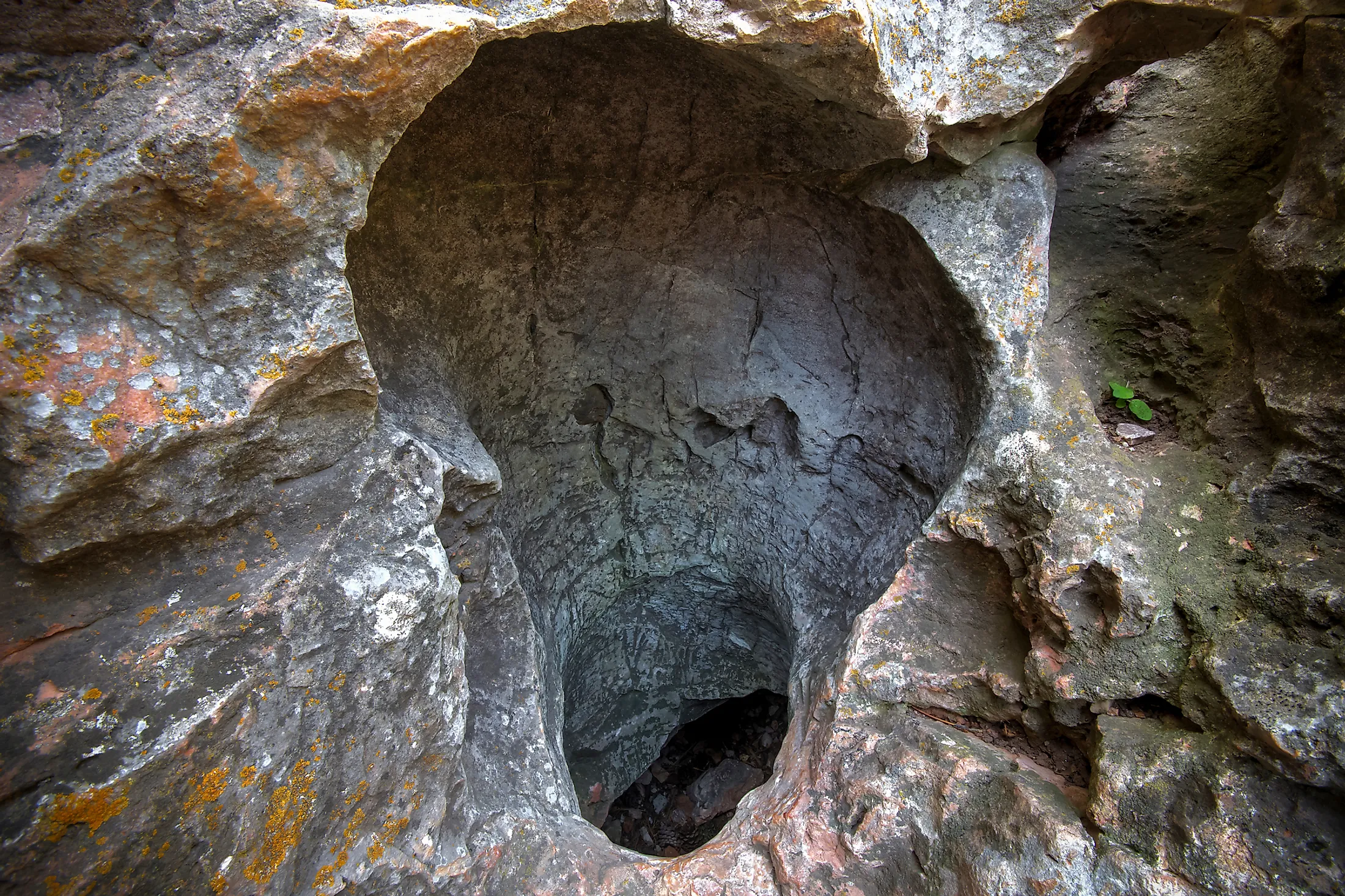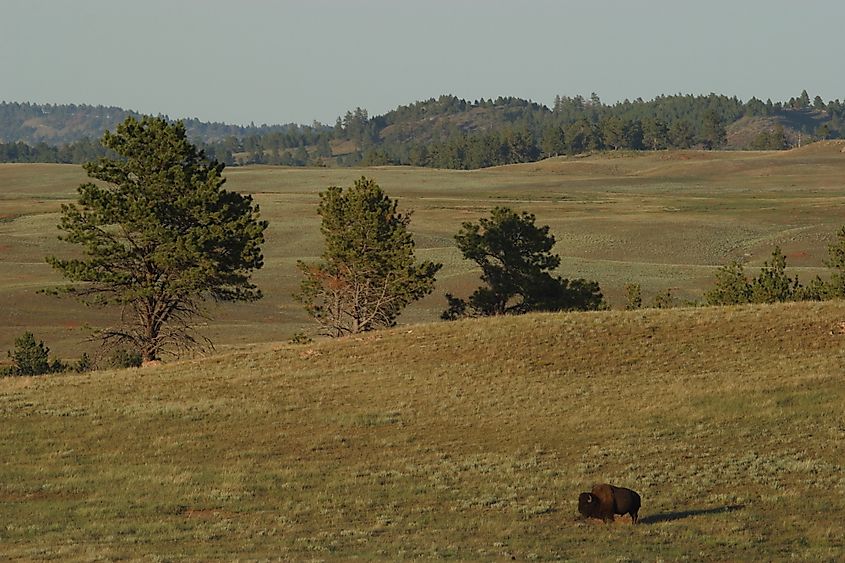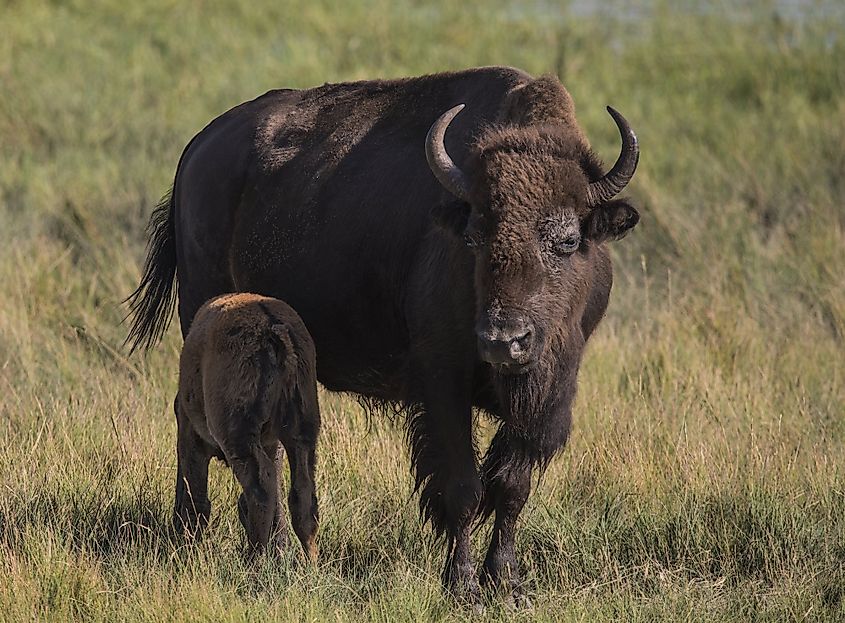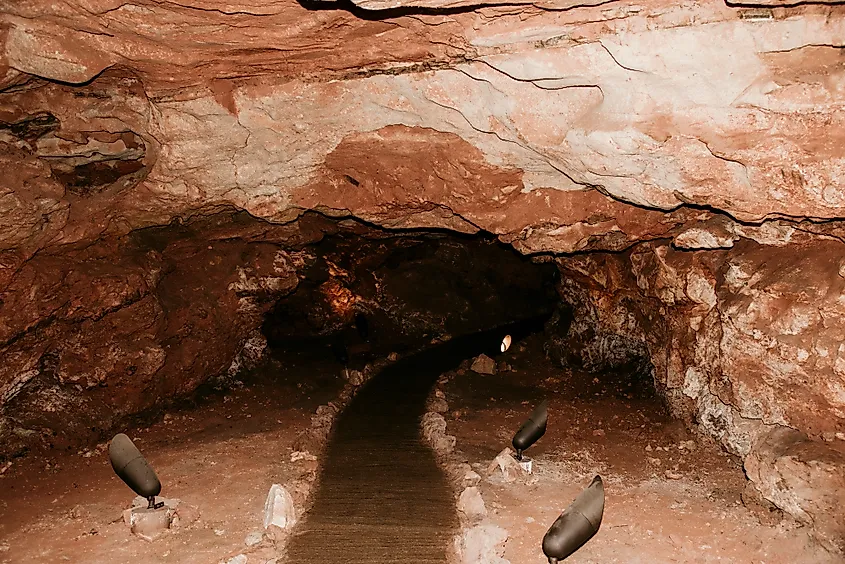
Wind Cave, South Dakota
Among one of the largest mapped caves in the world, Wind Cave is a multi-faceted National Park in South Dakota, U.S.A. The Cave is well known for not only its enormous size but the vast attractions and land which surrounds it.
The Wind Cave was declared a national park in 1903 and experienced over 615,000 visitors in the past year. It was named as such due to the natural wind which blows in and out of its massive entrance. Interestingly, the wind blows based on its barometric pressure. When the pressure within the Wind Cave exceeds the current outdoor air pressure, it blows out the wind.
History Of The Wind Cave
Wind Cave had been deemed sacred by Native Americans for a very long time before brothers Jesse and Tom Bingham “discovered” the Cave in 1881. The pair would discover the Cave by tracking down a small hole in the ground which seemingly blew wind, causing a loud whistling noise.
Scientists would later discover that the small hole was really the Wind Cave and that the wind was blown in and out due to its internal pressure. The first true explorer came ten years after the Binghams discovered the Cave. Alvin McDonald entered the Cave beyond its entrance, discovering that the Cave was very different than those found in the east. As opposed to large stalagmites, the Cave was full of popcorn, boxwood, and frostwork cave formations.
Fast forward to 1903, Wind Cave and its surroundings were deemed a National Park by President Theodore Roosevelt. From then on out, the Cave was protected by the US government. In modern times, tourists can explore the Cave and its surrounding beauty freely, with the opportunity for guided sessions.
Geography Of Wind Cave

Wind Cave National Park covers a total of 28,295 acres, with the Cave itself accounting for 143 mapped miles. However, that figure remains ambiguous due to the sheer amount of undiscovered tunnels. Prairies, pine forests, and various wildlife inhabit the remaining area. The Wind Cave’s lowest elevation is found at Beaver Creek, where the elevation is just 3,559 feet. The highest elevation is 5,013 feet and can be found at Rankin Ridge.
Wind Cave is well known for its boxwork, otherwise known as calcite formations. 95% of the world’s boxwork formations are located here at Wind Cave. The formations resemble honeycombs or boxes as they were naturally designed in geometric shapes. The Cave is also home to frostwork formations, which are delicate crystals that appear to have a frosted or glazed-over color.
Flora And Fauna At Wind Cave

Due to its extensive size, Wind Cave is home to a multitude of different animal and plant species. As the Park is full of flat ground, walking animals like bison, badgers, elk, cougars, ferrets, coyotes, pronghorn antelopes, red foxes, prairie dogs, bobcats, minks, skunks, and rattlesnakes. Bison is one of the more prominent animals found around the Wind Cave. They roam the area in a similar manner to cows on a farm.
Pine forests surround the Cave somewhat sporadically, giving birds the chance to roam around, flying from tree to tree without harm. Some of the birds that could be seen are woodpeckers, turkey vultures, snow gooses, wood ducks, meadowlarks, wild turkeys, ospreys, gray partridges, and mallards. There is also ample opportunity to spot birds that are coming or leaving from migration.
In terms of fauna, the Park is full of varying flowers, plants, and trees. Ponderosa pine gives off a vanilla accord among delicate wildflowers like purple cone flowers, white sego lilies, and yellow sunflowers. Among more common plants and trees, Wind Cave boasts bur oak, apple tree, and bloom, juniper, sumac, poison ivy, willow, elderberry, maple, cottonwood, and birch.
Attractions At Wind Cave

Wind cave offers many attractions ranging in price, time, and physical exertion. For starters, you may enter the opening of the Cave completely free! Without booking a tour, you may hike for 10-20 minutes into one of the only known natural entrances to the Cave. Three different cave tours explore different portions of the Cave. They range from 1 hour to 1 and a half, with variation in miles traveled and elevated steps taken.
For those looking to explore the Park itself, hiking among the animals is a terrific and cost-effective option. The Park is dog friendly and encourages exploration from its visitors. There is an opportunity to horseback ride through the trails, explore prairie dogs and bison towns, or even camp in the backcountry. For younger visitors, you may even participate in a 20-45 minute activity to earn your junior park ranger certification.











